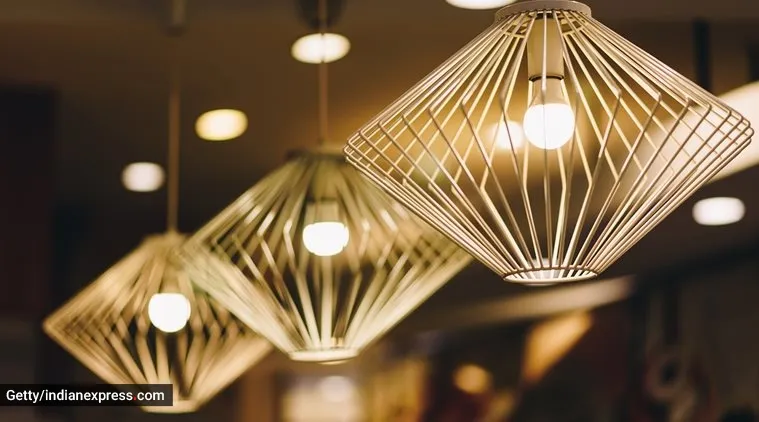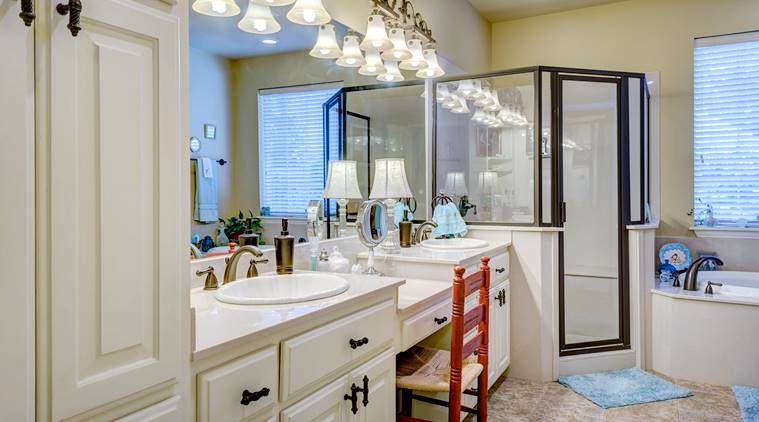 Layered lighting comprises three layers of light — ambient, accent, and task lighting. (Source: Getty Images/Thinkstock)
Layered lighting comprises three layers of light — ambient, accent, and task lighting. (Source: Getty Images/Thinkstock)
Lights play an intrinsic part in the interior design of any space. But it is layered lighting that actually creates an impact in terms of aesthetics, functionality and prudent use of energy. Layered lighting is the art of bringing together or highlighting diverse elements and textures in any space cohesively. Knowing how to layer light is an art in itself, which when laid out well, can enhance the ambiance of a well-lit room. Lighting affects mood, cognition, as well as our well-being, and therefore is one of the most important design elements. The trick is to create dynamic layers that appeal to the design sensibilities and cater to the need, says Vikas Gandhi, head; senior vice president, lighting and premium fans, Tisva.
Layered lighting comprises three layers of light — ambient, accent, and task lighting. Ambient light is considered the first layer of lighting which provides the basic illumination and comfort; task lighting is the second layer used for utilitarian jobs; and accent lighting is typically used as a final touch to accentuate certain aspects/elements to elevate any room.
Layering your lighting simply means stepping beyond the basic overhead general lighting and thoughtfully arranging different styles in order to achieve the most pleasing and impactful results.
Here’s how
Ambient lighting
Ambient lighting is what illuminates and provides an adequate visual of the room. The goal of ambient lighting is to evenly provide base lighting to a space. It is the light that substitutes natural light, and this is where most people stop. But it must be noted that this is just the first step. Typically, ambient lighting is created by using overhead lighting such as pendants, semi-flush/flush mount ceiling fixtures, or track lighting. This type of lighting is mostly uniform.
Task lighting
This is the second layer that lighting specialists look at. This layer is commonly referred to as the ‘functional’ or ‘utility’ light. This lighting comes in handy while doing specific jobs, such as reading, cooking, grooming etc.
Different rooms in a home are used for distinguished tasks, and proper evaluation of a room is required to choose the correct task light. The main purpose of task lighting is to improve the efficiency for completing specific tasks performed in a space. For instance, an office may only require task lighting near the primary working area, whereas a kitchen requires bright illumination as a whole. Proper use of task comes into play when the demands of the room are taken into consideration, and requires careful analysis of the heights and distances from lighting sources. Task lighting, if correctly utilised, will minimise glares and shadows and prevent eyestrain.
For kitchens, stylish pendants can go a long way in illuminating an island slab and cooking area. For an office space, consider using table desk lamps, or floor lamps which direct focus to where you require light the most, the working area.
Accent lighting
 Bring a change in your usual home decor. (Source: Pixabay)
Bring a change in your usual home decor. (Source: Pixabay)
While task lighting has a work-oriented purpose, the mood and personality of a room can be achieved through accent lights. Accent lights don’t have to be functional (though they can be) and are available in a variety of options. They are most often used to highlight specific items of prominence in a room. Uplighting a sculpture, a special shelf or an antique cabinet lends a beautiful aura to the piece de resistance on display, while a sparkling chandelier over a boudoir adds drama without needing to give off much light. This is the “decorative” layer of lighting because it allows you to highlight the points of interest in the interior of your homes.
Not just indoors, accent lighting can also be used outside your homes, to illuminate your porch or entryway. This can be done by incorporating bright spot lights or LED tape lights. Types of fixtures typically used for accent lighting include track lighting, uplighters, and downlighters. Accent lighting works to bring an added visual interest to a room by creating different focal points, making it a very important aspect of home design.
The most aesthetically pleasing and effective way to light a room is to have all the three layers. In fact, adding a dimmer switch to any or all layers can help you create a specific mood for special occasions and the time of day. The right lighting can truly elevate your space, lift the mood, and bring a room to life.